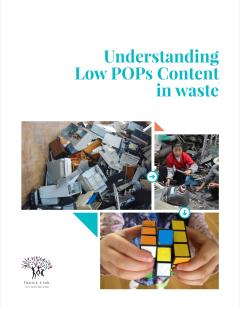
This factsheet outlines the concept of Low POP Content Levels (LPCLs), which set thresholds for persistent organic pollutants (POPs) in waste. When exceeded, these thresholds trigger the requirement for destruction or irreversible transformation under the Stockholm Convention. However, current provisional LPCLs are seen as too lax, enabling contaminated materials like recycled plastics and incinerator ash to re-enter the market.
It urges the adoption of stricter LPCLs, more accurate inventories of POP-containing waste and greater use of non-combustion destruction methods. It also critiques weak limit proposals by the European Commission and highlights India’s lack of commitment to addressing LPCL challenges, despite its obligations under the Stockholm and Basel Conventions.
The document closes with targeted recommendations for Indian policymakers to strengthen POP waste controls and prevent the global recirculation of hazardous substances through recycling streams.
Target audience
- Stockholm Convention Official Contact Points and National Focal Points, particularly from project countries
- National officials and experts involved in the process of reviewing and updating the NIPs
- National officials and experts involved in hazardous chemicals and waste management
- Members of NIP National Coordinating Mechanism/Committees and Project Coordination Units/Thematic Task Groups
- Representatives of regional centres
- Other stakeholders
